Post by 90GTVert on Aug 14, 2011 20:58:01 GMT -5
Minarelli / 1E40QMB Wrist Pin Size
The horizontal Minarelli / 1E40QMB / Jog style of two-stroke scooter engines are commonly equipped with 1 of 2 different sizes of wrist pin. Some models have a 10mm wirst pin, some models use a 12mm wrist pin. You must know which one you have to choose some parts like a cylinder kit / big bore kit, piston kit, crankshaft, etc...
I suppose I should start by explaining what the wrist pin is so we're all clear on what we're talking about. The wrist pin is sometimes also called a piston pin or gudgeon pin. It is the cylinder that passes through the piston and the connecting rod (with a bearing between the two) to secure the piston to the connecting rod and crankshaft.
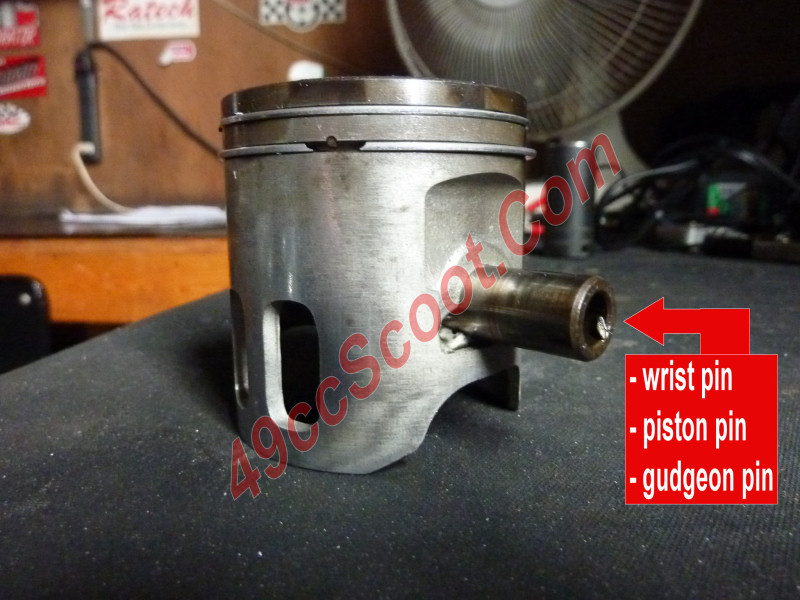
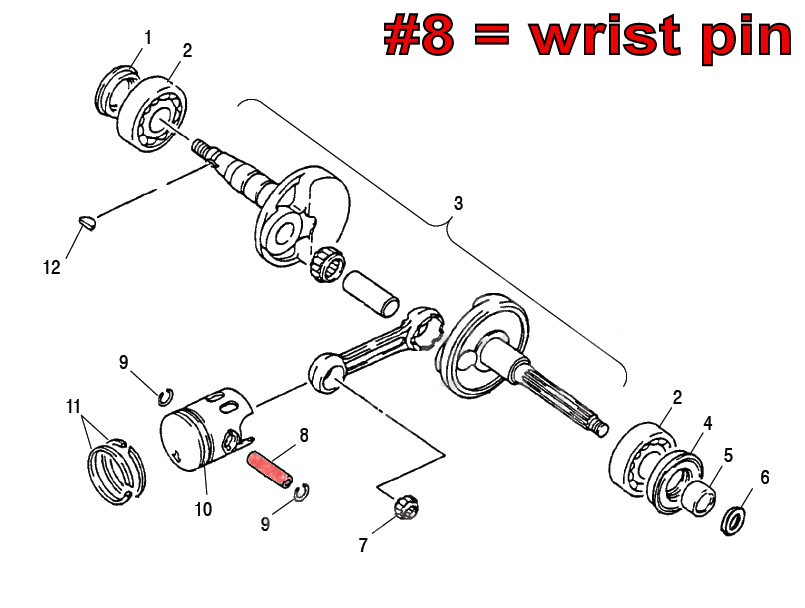
Of course the straight-forward method of finding out what size wrist pin you have is to disassemble the engine and measure it. This is the only way that you can be 100% sure of what you have, although other methods are quite reliable as well. If you measure the wrist pin directly, measure it's outside diameter.
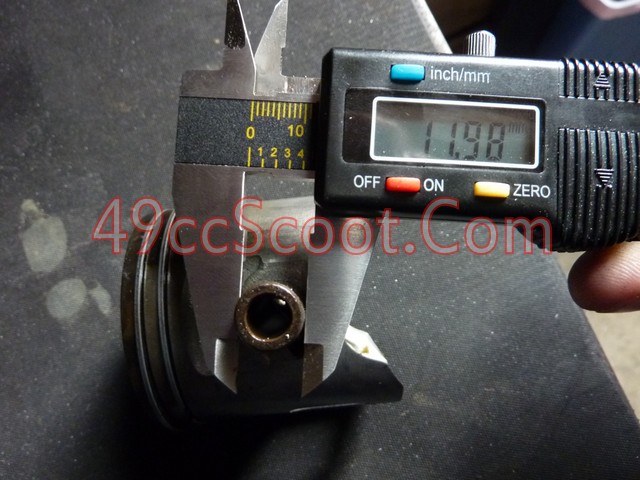
You can measure the passage in the piston or the wrist pin while it's still installed to avoid removing the circlips and pin.
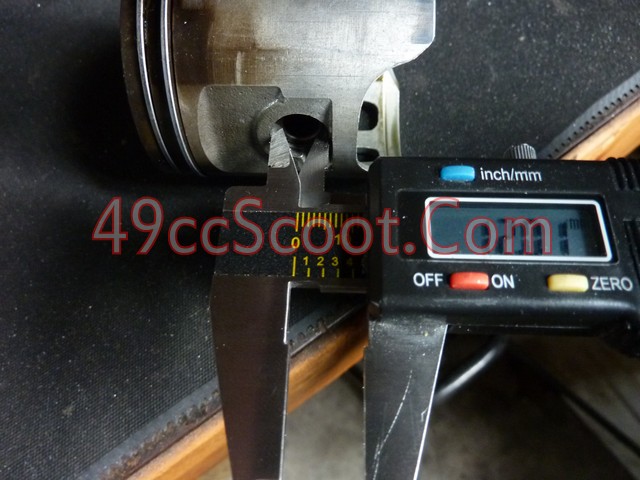
Some people would prefer not to disassemble the engine to check the size of the wrist pin before ordering parts. Not disassembling the engine avoids a bit of down time and saves gaskets. Luckily, there is a way around engine disassembly that is pretty accurate.
The size of the wrist pin is not the only variable in 1E40QMB crankshafts. They can also come with large and small flywheel tapers. That's the bit of the crankshaft that the flywheel presses onto. I won't go into specifics for the flywheel side of the crank, because I feel it is the least accurate method for knowing wrist pin size without measuring it directly.
The opposite side of the crankshaft also comes in a couple of versions, large and small. The large version is sometimes called a 90cc style while the small version would be the 50cc style. These descriptions are misleading however, because many 50cc engines have the larger style. The large style should indicate a larger 12mm wrist pin, while the smaller style usually corresponds with the smaller 10mm wrist pin. This side of the crankshaft that extends into the CVT is splined and the variator (front pulley of the CVT) rides on it. You also need to know it's size to choose the correct variator for your scoot.
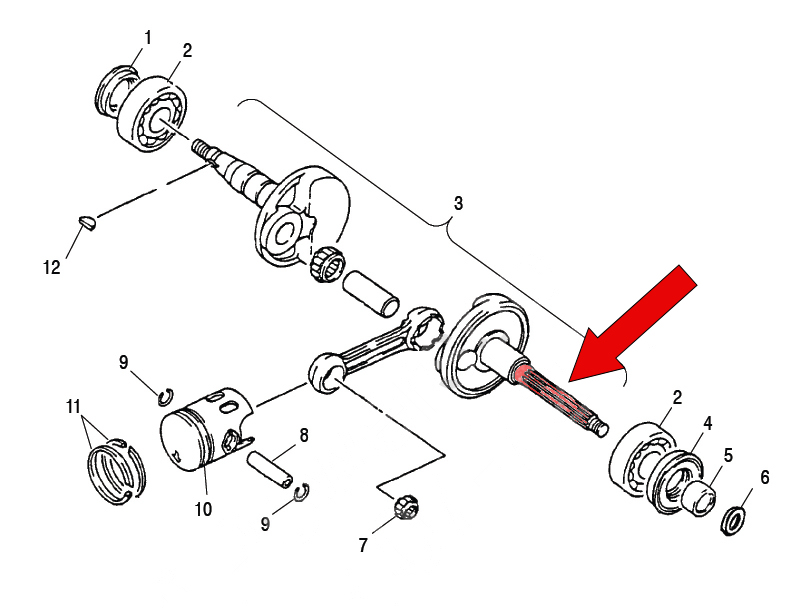
The larger version should measure roughly 16mm outside diameter. The smaller version measures around 13mm outside diameter. You will need to remove the nut on the end of the crankshaft and remove the washer, kickstart pawl, and the fixed half of the front pulley to access and measure this.
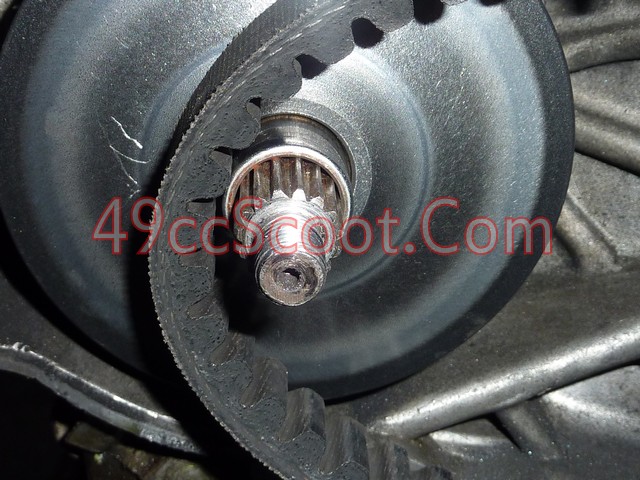
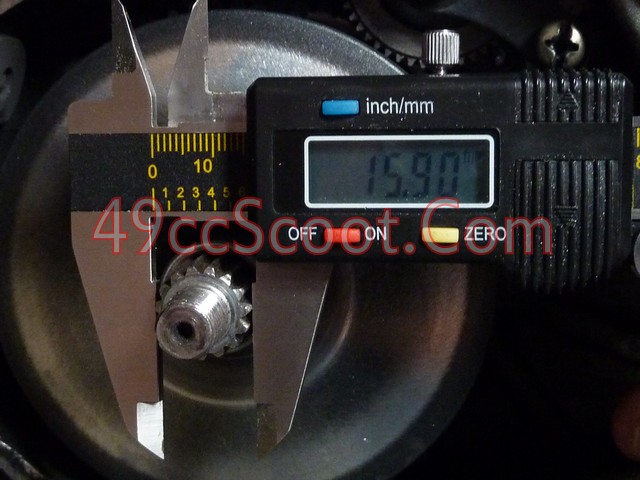
You can also tell the larger and smaller styles of this side of the crankshaft by counting the number of splines it has. The larger style will have 15 splines, while the smaller 13mm style will have 17 splines.
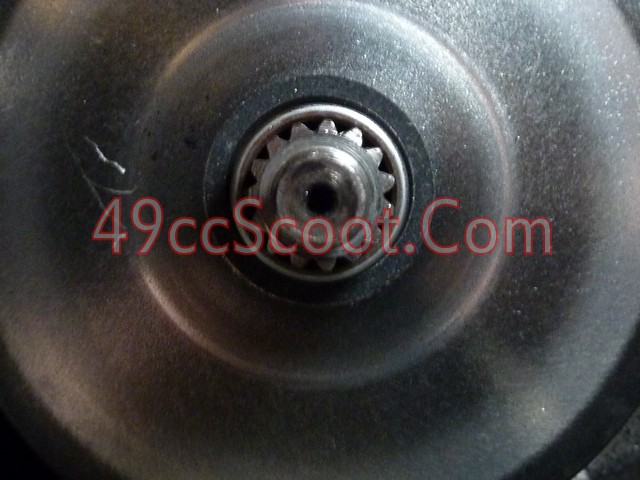
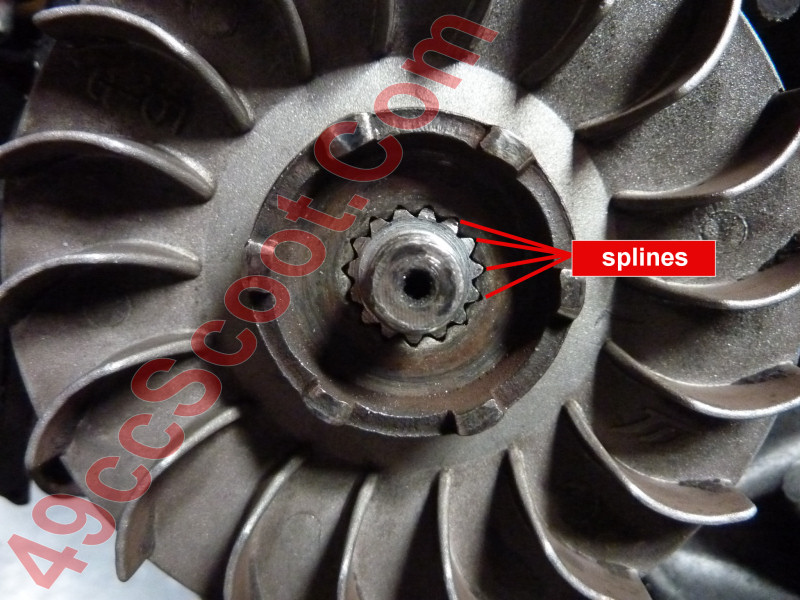
Yet another way to determine if your engine has a large or small crank is to measure the drive boss. The drive boss is the sleeve or bushing that goes through the center of the variator, riding on the crankshaft. The large splined crankshaft should have a drive boss with an outer diameter right around 21mm. The smaller version should be about 18mm outside diameter.
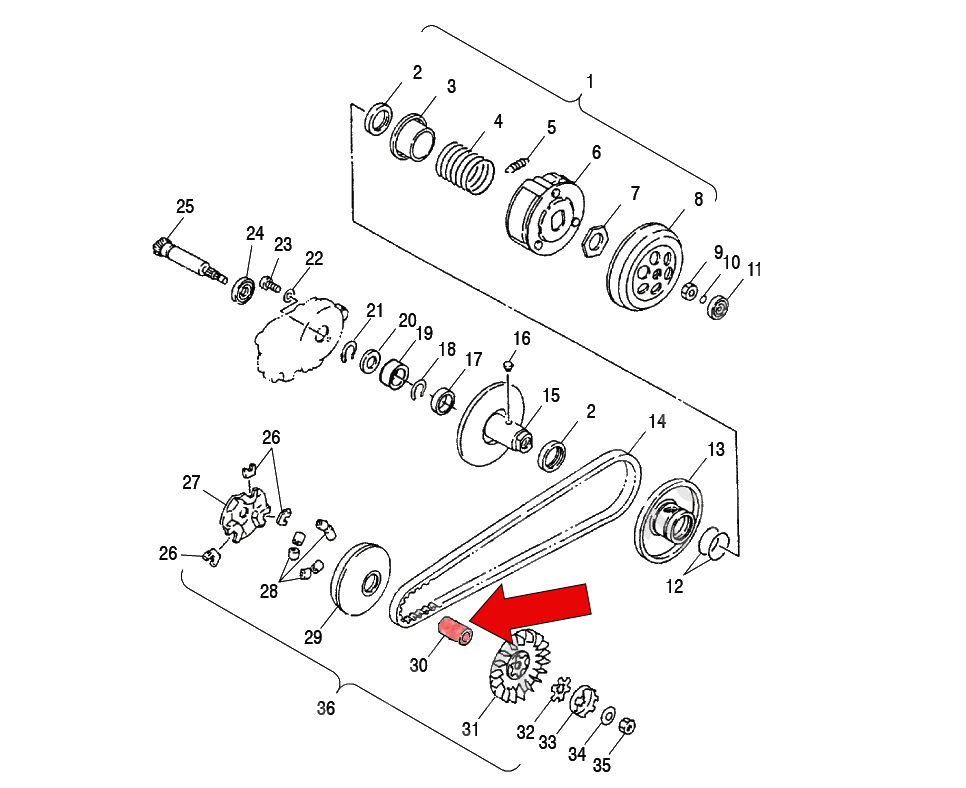
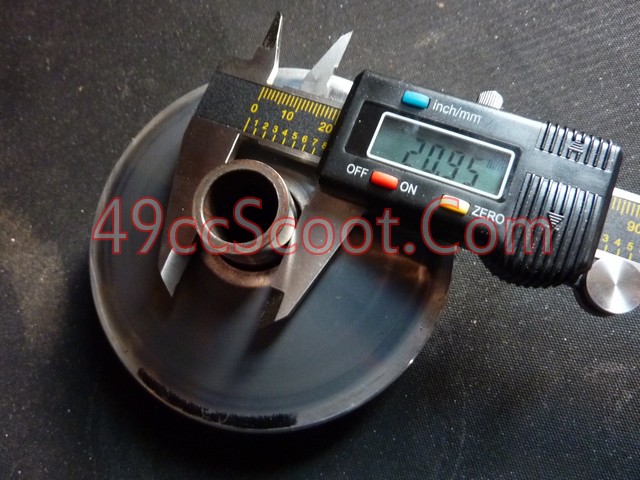
One benefit of using the drive boss measurement is that it requires very little disassembly. If the drive belt is pulled into the center of the rear pulley you can create a lot of slack in the front pulley to make measuring the drive boss without removing anything past the CVT cover possible.
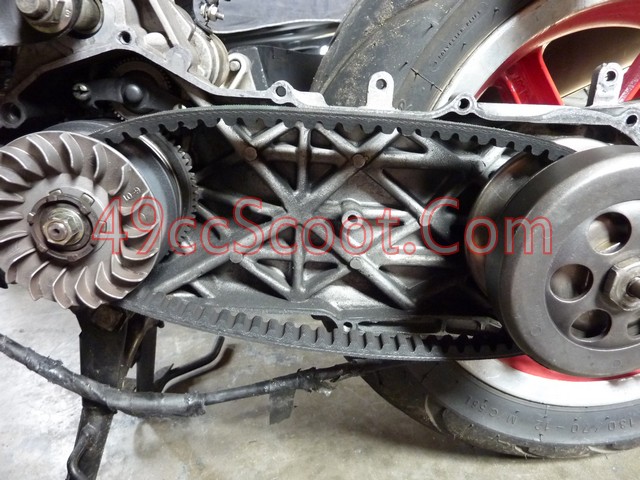
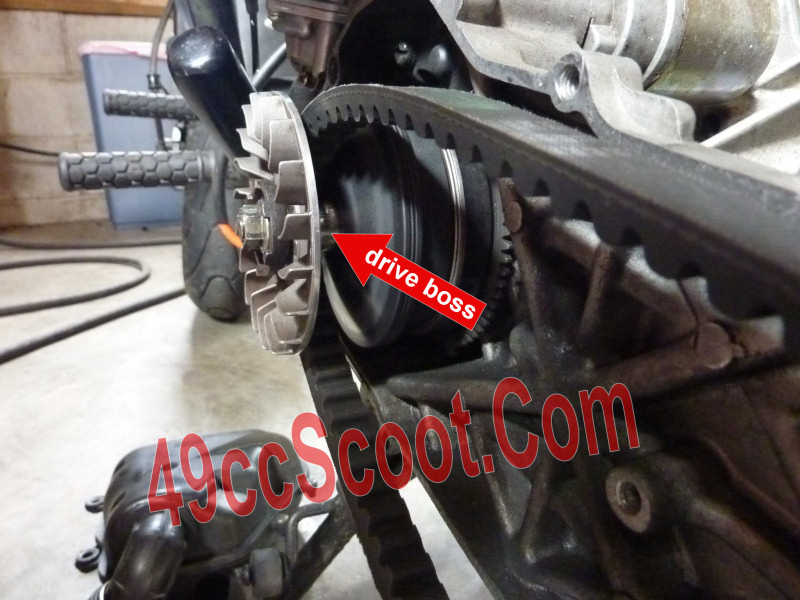
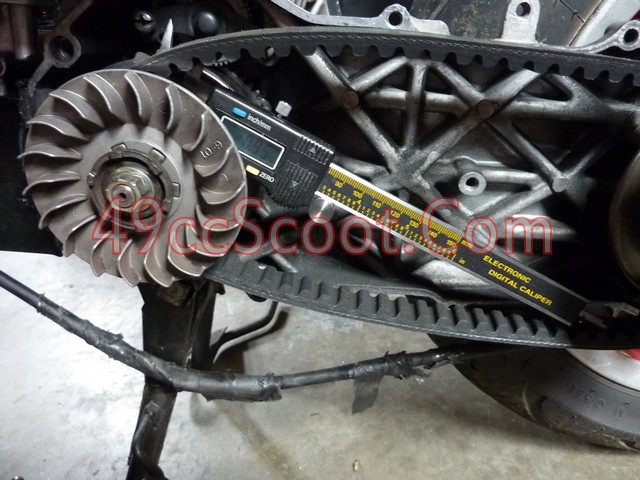
You may also be able to find information from sellers or from other owners of your scooter that will tell you the wrist pin size for your scooter. It is very likely that you'll need to know the year of your scooter. It's very common for some Chinese manufacturer's pre-2003 models to use a 10mm wrist pin and post-2003 models to use the larger 12mm pin. That absolutely does not mean that all Chinese 1E40QMBs within those dates have the corresponding pin size, it only applies to certain makes and models. If you aren't sure of the year of manufacture, you may be able to locate it on a sticker, such as an emissions sticker like the first pic. If you aren't lucky enough to have a sticker in a prominent spot, you should have a VIN or ID plate of some sort on the scooter frame that will indicate the date of manufacture.
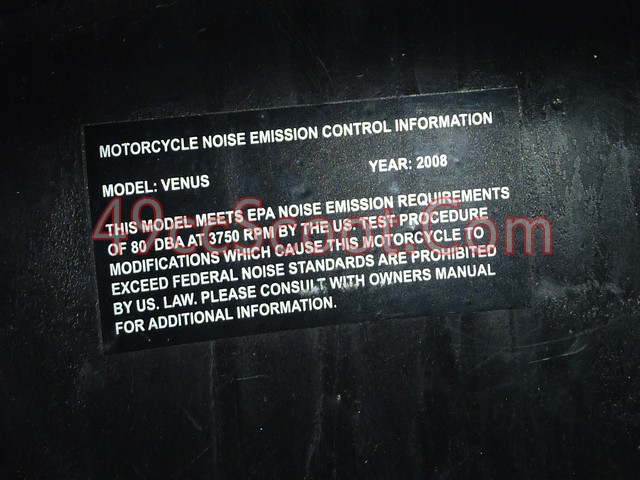
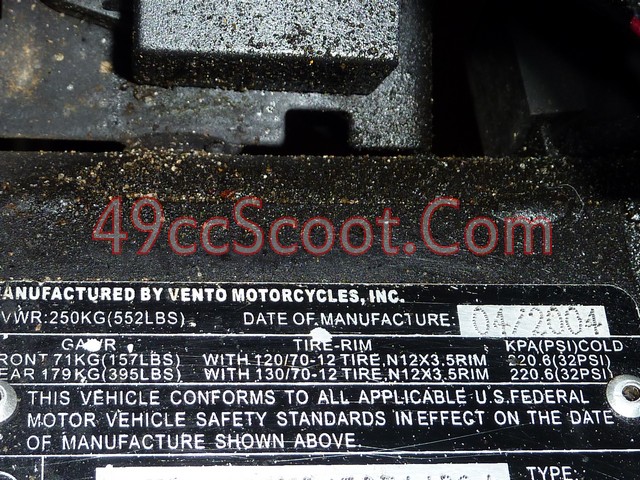
The horizontal Minarelli / 1E40QMB / Jog style of two-stroke scooter engines are commonly equipped with 1 of 2 different sizes of wrist pin. Some models have a 10mm wirst pin, some models use a 12mm wrist pin. You must know which one you have to choose some parts like a cylinder kit / big bore kit, piston kit, crankshaft, etc...
I suppose I should start by explaining what the wrist pin is so we're all clear on what we're talking about. The wrist pin is sometimes also called a piston pin or gudgeon pin. It is the cylinder that passes through the piston and the connecting rod (with a bearing between the two) to secure the piston to the connecting rod and crankshaft.

Of course the straight-forward method of finding out what size wrist pin you have is to disassemble the engine and measure it. This is the only way that you can be 100% sure of what you have, although other methods are quite reliable as well. If you measure the wrist pin directly, measure it's outside diameter.

You can measure the passage in the piston or the wrist pin while it's still installed to avoid removing the circlips and pin.

Some people would prefer not to disassemble the engine to check the size of the wrist pin before ordering parts. Not disassembling the engine avoids a bit of down time and saves gaskets. Luckily, there is a way around engine disassembly that is pretty accurate.
The size of the wrist pin is not the only variable in 1E40QMB crankshafts. They can also come with large and small flywheel tapers. That's the bit of the crankshaft that the flywheel presses onto. I won't go into specifics for the flywheel side of the crank, because I feel it is the least accurate method for knowing wrist pin size without measuring it directly.
The opposite side of the crankshaft also comes in a couple of versions, large and small. The large version is sometimes called a 90cc style while the small version would be the 50cc style. These descriptions are misleading however, because many 50cc engines have the larger style. The large style should indicate a larger 12mm wrist pin, while the smaller style usually corresponds with the smaller 10mm wrist pin. This side of the crankshaft that extends into the CVT is splined and the variator (front pulley of the CVT) rides on it. You also need to know it's size to choose the correct variator for your scoot.

The larger version should measure roughly 16mm outside diameter. The smaller version measures around 13mm outside diameter. You will need to remove the nut on the end of the crankshaft and remove the washer, kickstart pawl, and the fixed half of the front pulley to access and measure this.


You can also tell the larger and smaller styles of this side of the crankshaft by counting the number of splines it has. The larger style will have 15 splines, while the smaller 13mm style will have 17 splines.

Yet another way to determine if your engine has a large or small crank is to measure the drive boss. The drive boss is the sleeve or bushing that goes through the center of the variator, riding on the crankshaft. The large splined crankshaft should have a drive boss with an outer diameter right around 21mm. The smaller version should be about 18mm outside diameter.


One benefit of using the drive boss measurement is that it requires very little disassembly. If the drive belt is pulled into the center of the rear pulley you can create a lot of slack in the front pulley to make measuring the drive boss without removing anything past the CVT cover possible.


You may also be able to find information from sellers or from other owners of your scooter that will tell you the wrist pin size for your scooter. It is very likely that you'll need to know the year of your scooter. It's very common for some Chinese manufacturer's pre-2003 models to use a 10mm wrist pin and post-2003 models to use the larger 12mm pin. That absolutely does not mean that all Chinese 1E40QMBs within those dates have the corresponding pin size, it only applies to certain makes and models. If you aren't sure of the year of manufacture, you may be able to locate it on a sticker, such as an emissions sticker like the first pic. If you aren't lucky enough to have a sticker in a prominent spot, you should have a VIN or ID plate of some sort on the scooter frame that will indicate the date of manufacture.



